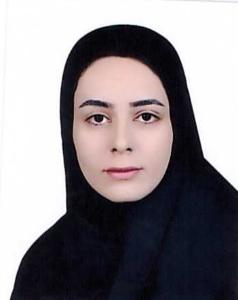Numerical Study of the Skirted Foundation of Wind Turbines on Sand under Lateral Dynamic Loading - دانشکده فنی و مهندسی
Numerical Study of the Skirted Foundation of Wind Turbines on Sand under Lateral Dynamic Loading

نوع: Type: thesis
مقطع: Segment: Masters
عنوان: Title: Numerical Study of the Skirted Foundation of Wind Turbines on Sand under Lateral Dynamic Loading
ارائه دهنده: Provider: Faezeh Maghsoodifar
اساتید راهنما: Supervisors: Dr. Masoud Makarchian
اساتید مشاور: Advisory Professors:
اساتید ممتحن یا داور: Examining professors or referees: Dr.Vahidreza Ohedi, Dr.Abbas Qadimi
زمان و تاریخ ارائه: Time and date of presentation: 18:00, 15March2022
مکان ارائه: Place of presentation: Virtual Room No. 2
چکیده: Abstract: In the last 20 years, global warming, climate change, and lack of fossil fuel resources have forced many countries, including Iran, to search for environmentally friendly alternatives such as renewable energies. Among them, wind power has played a significant role. The wind turbine industry has great potential to grow faster and further. It can bring advancement to the industry, create millions of jobs annually and reduce air pollution. However, one of the most crucial issues is concerns regarding the design of the foundation of these turbines. The foundations of wind turbines account for about 30% of the total project cost and are one of the main factors in maintaining the structure's stability during its 20-year lifetime. Since the wind energy industry has expanded in the last two decades, designing and implementing the foundations of this sensitive and expensive structure has become a topic of interest for researchers in foundation engineering and geotechnics. In both offshore and onland wind farm projects, each foundation type has its advantages and limitations depending on various factors, including wind conditions, water depth (offshore wind turbines), bed geotechnical conditions, and turbine size. This type of structure is more affected by large environmental loads and diverse geotechnical conditions. Moreover, the fact that construction costs have a giant impact on the project's economics proves the need for various research and innovations in the field of foundation design and implementation. The use of skirted foundations for offshore wind farms is growing rapidly. Engineering professionals have introduced skirted foundations to reduce the costs of offshore wind turbine farm projects while meeting sustainability and environmental protection concepts. This study investigates and numerically simulates the behavior of skirted foundations for offshore and onland wind turbines. The behavior of this foundation was studied using actual load values and DNV, IEC, and EN 61400-1 and 94-500 regulations. In offshore locations, by using the back-calculation method, soil parameters and soil behavior models were re-calculated from Houlbsby et al. (2005), Houlsby & Bern (2000), the sandy soil in Frederikshavn, Denmark, and the sandy soil in the Frederikshavn region, with densities of 90% and 63%, respectively, were determined. Furthermore, sand with three relative densities of 75, 50, and 25% was used as the bedrock of the Onland wind turbine in studies conducted by Oh et al. (2018). For offshore and onland situations, sixty three-dimensional numerical models were simulated and analyzed using PLAXIS 3D CE version 2021. We only modeled half of the complete system to facilitate computation because of the symmetrical geometry. We employed the 10-node elements available in the software for soil mesh. Both saturated and unsaturated sandy soils were examined in these analyses. Another essential aspect of the analysis of this type of foundation, which was carefully explored in this study, was how the loads on the wind turbine and their effect on its foundation are loaded and calculated. This research investigates the behavior of skirted foundations under ULS and SLS limit state loads (offshore position) using the actual scales and VHM (static load V and dynamic load HM) in addition to the effects of decentralization of loads horizontally in all analyses. As part of the numerical study, choosing the suitable behavior model is very important since the soil is a dynamic and living organism that shows more than just elastic, plastic, and nonlinear deformations, but also irreversible plastic strains. In addition, since this study aims to investigate the behavior of skirted foundations under dynamic and static loads, HS-small behavioral models were used in the analysis. This study showed that this type of foundation could improve the bearing capacity and reduce subsidence in both offshore and onshore situations. According to these results, the presence of a lateral skirt enhances the behavior and increases the bearing capacity. Interpretations of the results indicate that the amount of the foundation rotation under the overturning moment decreases as the relative density of the soil increases. The slender ratio of the skirted foundation decreases as well. Additionally, increasing soil relative density results in a decrease in the edge length. This significantly impacts steel consumption and, consequently reduces project costs. Under dynamic loads, these edges reduce the possibility of the overturning of wind turbine structures compared to the skirtless shallow foundations. Besides, The behavior of the foundation under periodic load is significantly influenced by the geometry of the skirted foundation and the soil properties. Keywords: Skirted Foundation, Offshore, Onland, Numerical Study
فایل: ّFile: Download فایل
